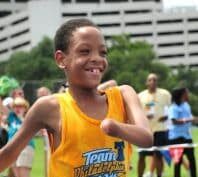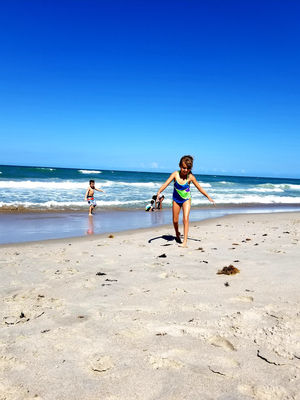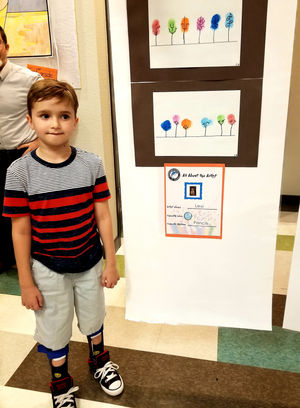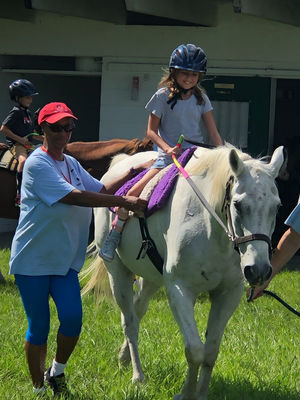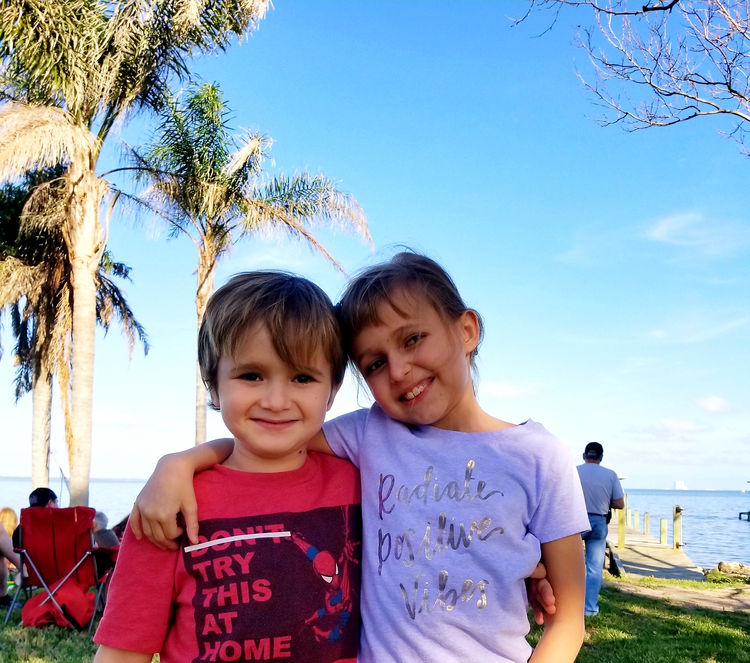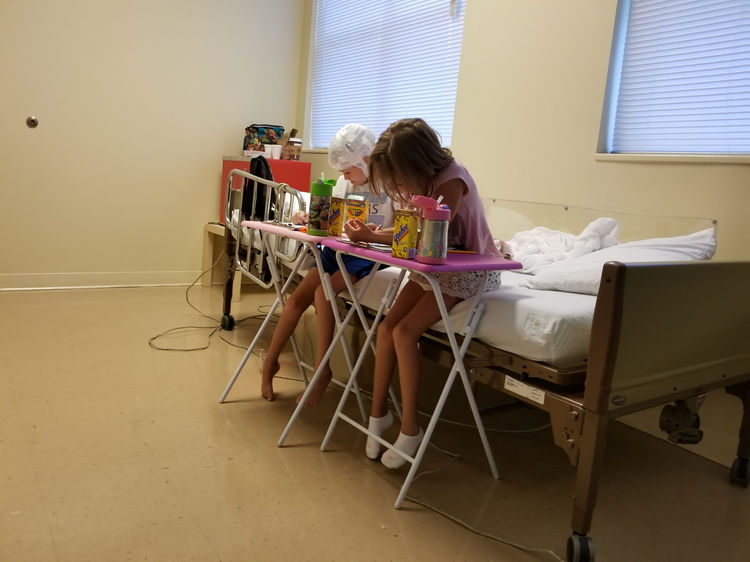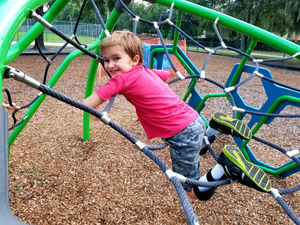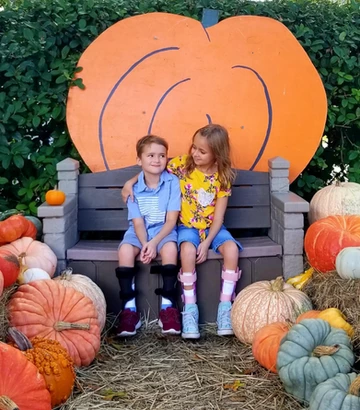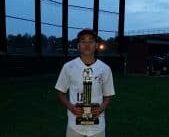Watch Haley and Levi Walker—aged 13 and 10—as they embrace the daily challenges of life, school, play, projects and partnerships—and you’ll see a couple of typical tree-climbing, beach-combing, dinosaur-digging, rock-climbing, snake-charming, adventure-loving kids. But for these busy siblings, their adventure includes a subliminal pioneering aspect, as well: they were born with an extremely rare neurological condition known as Hereditary Sensory and Autonomic Neuropathy, Type 6, and they’re blazing trails into this new territory every day, aided by colorful ankle-foot orthoses (AFOs) that keep them happily on the move.
Only a handful of families have had medical reporting done on this condition, so there are still many unknowns, explains Tiffany Walker, Haley and Levi’s mother, who has been working to learn more since the day Haley was born.
The onset of the condition is at birth, and although Haley seemingly was born healthy, Tiffany soon noticed hypotonia, or low muscle tone, that delayed Haley’s arrival at her gross motor milestones.
“She was very late to roll over and to sit up. I don’t think she started crawling until she was a year old, and she didn’t start walking until a few months after she turned two.”
These troubling signals weren’t ignored; Haley received physical therapy before she was a year old, but once she began walking, therapy was ended. At this point, a geneticist and a neurologist were consulted, but their evaluations and tests revealed primarily normal results, and a diagnosis remained elusive.
Barraza recalls his initial work with the Walker children in 2018, when Levi was 8 years old and Haley was 10.
Although they share the same rare diagnosis, individually they present quite differently, he explains. And although the condition is rare, its characteristics are similar to Charcot-Marie-Tooth disease, also known as hereditary motor and sensory neuropathy, which has been successfully managed with supportive therapy.
Barraza initially created ankle-foot orthoses (AFOs) to treat Levi’s equinovalgus condition, which involved eversion of the ankle, collapsing of the arch, and foot drop.
“In 2020, when we saw changes in his condition that included a very strong hyperextension of his knees, we started treating the knee extension as well. One of his issues was an inability to balance when standing still; he had to start shuffling and could not remain stationary without support. The braces allow him to stand without having to move.
“The braces are going to help him in providing alignment to the leg; they will control the hyperextension of the knee, the valgus of the ankle or pronation of the foot. In general,” he concludes, “they’re able to provide more support, so it’s safer to be able to stand and walk; there’s less chance of him falling. They will also reduce the amount of energy that he has to use to walk.”
One of the challenges in creating the AFO’s that now suit Levi so well, was reducing their bulk, creating low profile ankle joints, and especially achieving the precise balance for safety and stability by using an adjustable plantarflexion stop when setting the dorsiflexion angle of the brace to address the hyperextension issue.
“When we push too far forward to control the hyperextension of the knee—sometimes it’s not safe,” he warns. “They feel like they’re going to fall. That little bit of adjustment makes a big difference in Levi’s safety and confidence in walking.
“Levi is just a very fun kid to work with,” Barraza adds. “He has a super-outgoing personality, he is a joker! And he loves video games—especially Roblox. I don’t think there are any limitations on him—he’s just a normal boy.”
Haley, he reflects, is more reserved and quiet, but was excited and animated at the prospect of sharing her story with others to help and encourage them through their own mobility issues.
“She told me that she wanted other kids to be able to wear braces without being worried that somebody might be looking at them with their braces; she thought telling her story might make it easier for them to wear AFO’s,” he remembers.
Tiffany also credits Haley as the motivator for this story, for the same selfless reason. “Haley loves animals, loves science, and she has said for a long time that she wants to be either a vet or a doctor. She wants to help people. It’s funny because she’s so petite and small, but she will step up to advocate for others—it’s kind of amazing!” her mother reflects.
“No matter where she is, Haley loves to help. She is always thinking of others, and uses her creative crafting skills to make gifts for friends and family. She enjoys sharing about her condition and other helpful experiences she’s had.”
Haley was 10 when Barraza first met her–struggling with braces that were too uncomfortable to tolerate.
“The biggest issue for her,” he remembers, “was that she was never able to wear her braces. They helped, but only to a limited extent, because she wasn’t comfortable with them and couldn’t wear them long enough to do much good. They were just not made properly for the condition that she had or the way she presented—in a varus position with a really high arch, walking on the lateral portion of her foot. She had an Achilles contracture, so her ankle does not bend enough to allow her foot to rest flat on the floor.”
Re-creating a normal 90-degree ankle bend by wearing the solid-ankle AFO he created for her couldn’t be done in one drastic step, Barraza explained. He started, instead, with a less extreme angle, supporting and elevating her heel with a ½” wedge from the heel to the ball of her foot. During her most recent visit, he was able to reduce the wedge to ¼”—which allows him to reduce the overall size and bulk of her braces, as well.
“We have been working for three years now, and we’re slowly getting her there,” he observes. “Her Achilles tendon has begun to gradually stretch into the proper position and she is now able to comfortably wear her braces all day. The huge calluses that had formed to protect the lateral portion of her foot are nearly gone, now that the walking pressure on that area has been removed.
“Without braces, her gait pattern was unsteady, she walked on the lateral portion of her foot, and expended a lot more energy; but the braces provide stability—and confidence,” he concludes.
Tiffany agrees. “One of the biggest things about having AFO’s that fit her gives Haley confidence—and she can participate with her friends. Granted, she’s still going to be slower, and there are still things that she can’t do—but they allow her to be herself—and it’s just such a blessing that I can’t even describe the difference it’s made in the lives of my kiddos!
“Three years ago for Halloween, I was carrying my ten-year-old, because she could only walk so far without her braces; today, both of them are happily back in school, now attending Advance Learning Academy in Maitland (Florida), where the principal, the entire staff, the kids—are all just amazing!”
Given the opportunity to develop their potential, and aided by the Gardiner Scholarship for special needs children, both kids are on the honor roll and really thriving, Tiffany reports.
Levi the extrovert especially enjoys making waves with his AFO, she finds: “He is just goofy, silly, loves to make people laugh! He likes to create his own comics and invent games to play with his friends. Now, having the right AFO, he’s able to keep his friends actively entertained at recess—his favorite subject, he claims! His teacher says that Levi is usually the one leading the other kids—and if he didn’t have AFO’s that worked for him, he wouldn’t be doing that; he wouldn’t be able to participate with the other kids.”
It’s no longer a struggle to get the kids to don their braces and leave them on all day, she reports. “The all-day wearability has been such a blessing for them, and makes their daily activities so much easier. Now they put them on before school and don’t take them off until it’s bedtime. My husband even refers to the kids’ braces as their ‘legs’ when he suggests that they ‘Put on your legs and get ready to go!’”
Haley, at 13, is small for her age, but “definitely a teenager!” emphasizes her mother. She enjoys crafts, hanging out with her friends, loves writing, and ‘absolutely’ loves science. A focused and persistent researcher, she devotes hours on end to learning more about any new discovery that interests her.
Those interests include natural science; she has adopted and studied some unusual pet choices for such a petite, fairy-like child: not only is she an expert on rabbits like her own Bun Bun, but her up-close knowledge of reptiles rests on her experiences with a snake, a leopard gecko, and, currently, a bearded dragon.
Further evidence that her pixie-ish exterior conceals a surprising core of toughness: Tiffany reveals that one of Haley’s favorite games at school is touch football, where she has carried her team to victory by making the winning touchdown!
Levi’s goals involve helping people in different ways; his contagious smile is part of a kind-hearted gift for spreading happiness by making others laugh, and by using his boundless imagination to create comics, stories, and artistic renderings of his favorite video game characters. His carefree disposition is blended with the soul of a mathematician and practical problem-solver who frequently offers financial advice to his mom—“and sometimes charges a small fee for it!” she laughs.
Levi will play video games with his friends, his dad, or his older brother for as long as he’s allowed, but he always has time for his best friend Trudy—a lovable Border Collie-Lab mix, with Scooter the cat in a close second place.
“He dreams of being a famous YouTuber because, he claims, it’s a good way to make money! —and since he excels at anything that involves math,” says Tiffany, “he’s probably right!”
